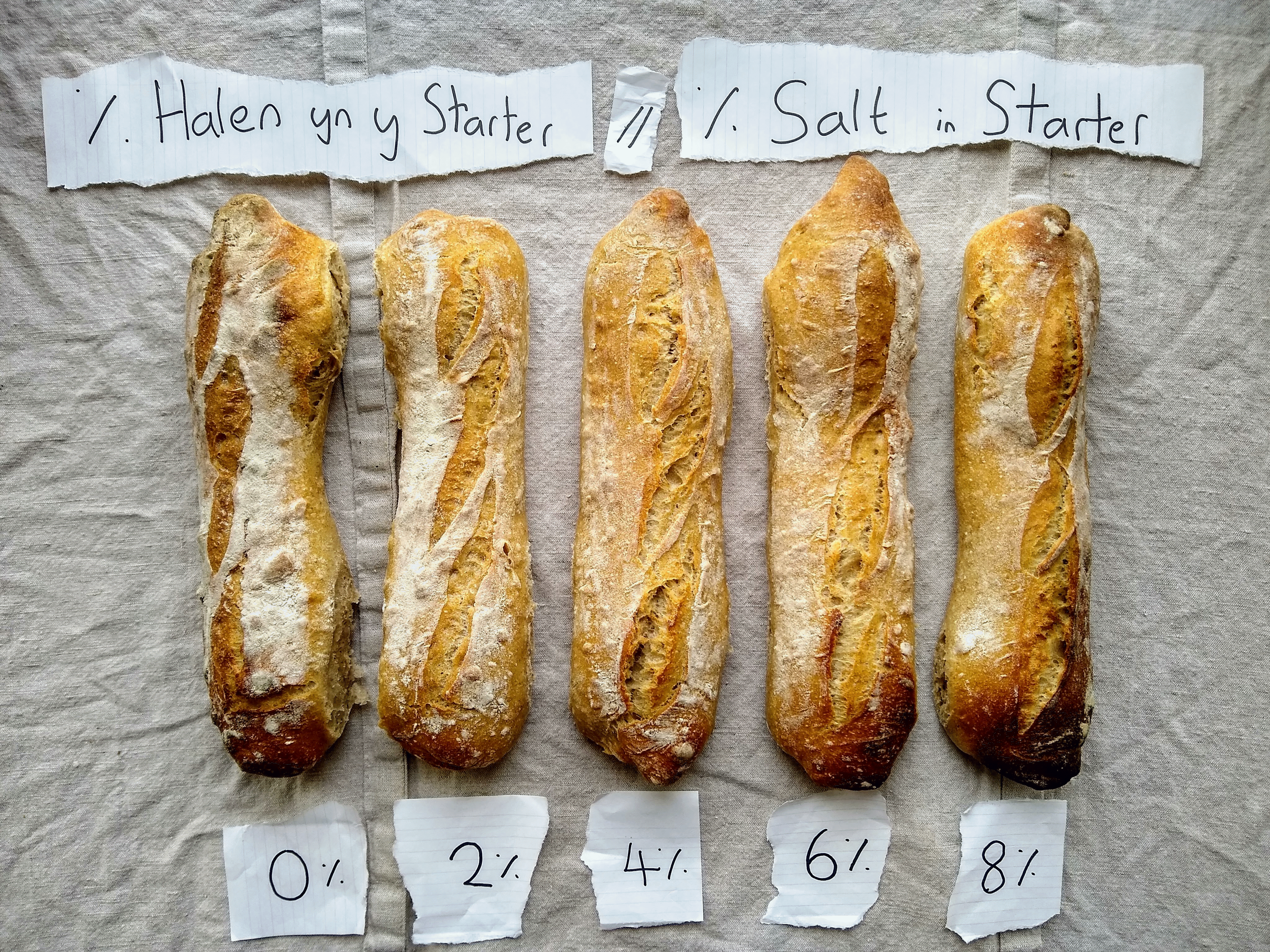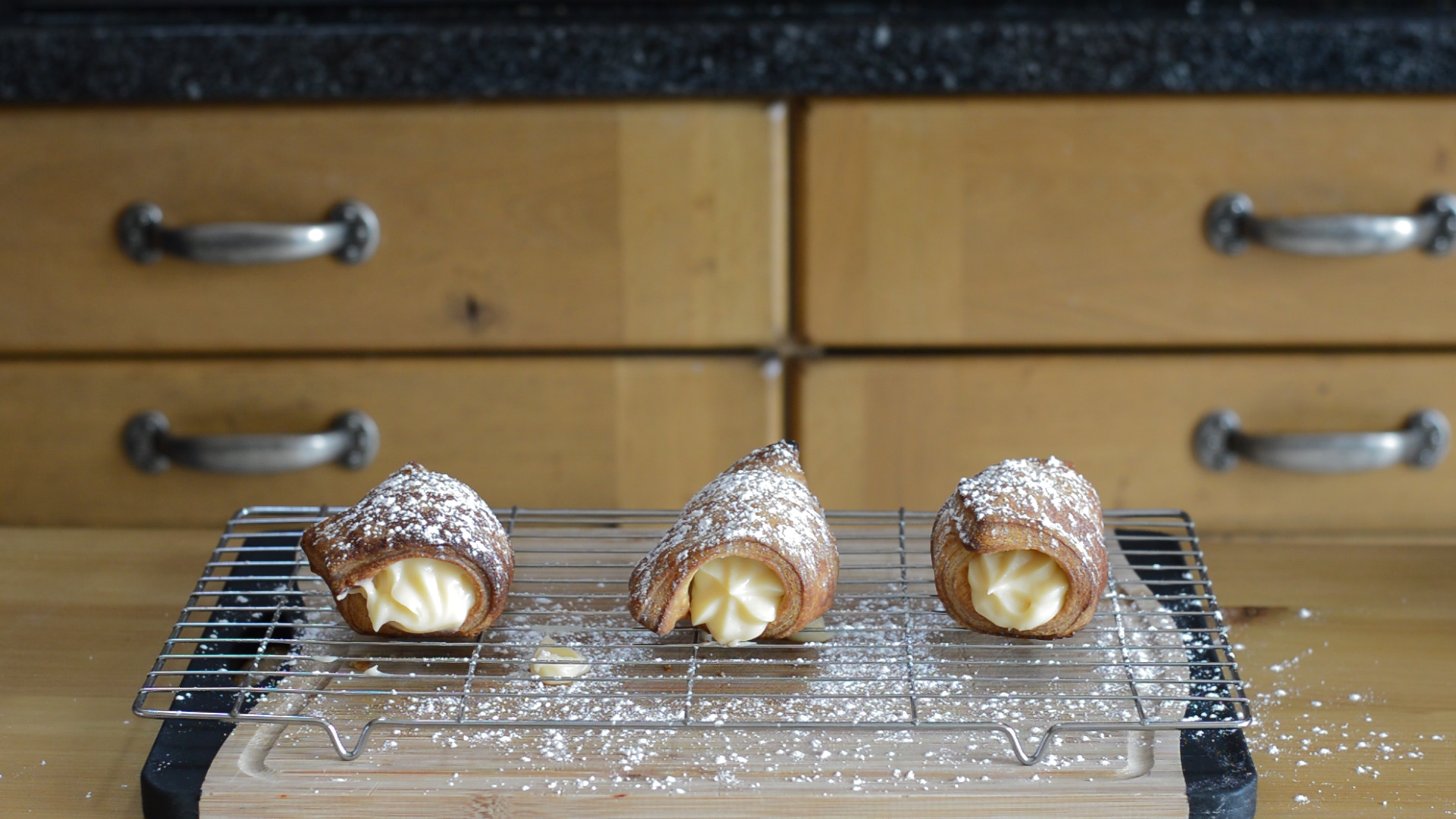Is it possible to create a sourdough, using only oats?
Below is a full laboratory report of the experiment. Highlighting the results, methodology and the science behind it all.
Abstract
A 50%hydration wheat based sourdough starter was refreshed with oats and water over a four day period. The aim was to establish a stable population of the sourdough microorganisms that could survive, and thrive, on oats alone. In doing so, the aim was also to convert the starter from being wheat based to being entirely oat based and gluten free.
It was found that it is indeed possible to maintain a stable sourdough culture in an oat based medium. Furthermore, the sourdough maintained it’s activity and leavening power at gluten concentrations of 4.2 parts per million (ppm). Because these gluten levels fell below the legal threshold of 20 ppm, the oat starter could then be considered gluten free (1)
Introduction
Establishing an oat sourdough
With Coeliacs, gluten intolerance and the trend in gluten-free food all on the rise, there is certainly a demand for gluten-free. It’s therefore a shame, given the corresponding popularity of fermented foods, that a gluten free sourdough is not possible.
The root of this problem is the sourdough starter. Simply put, a starter uses cultured yeast and bacteria to leaven and taste a a dough, producing sourdough. Traditionally, a starter is simply a mixture of flour and water, and this is enough to feed the microbes, maintaining the starter. However, without regular feeding, the microbes will expend their supply of available sugars, becoming less and less active until eventually, they, and the starter, become idle.
The question is therefore this:
Is there an alternative to flour, when it comes to feeding a sourdough starter? Something gluten free perhaps? Something, like oats?
To understand the answer. we first need to look at what exactly goes on a microbial level, in this soup of watered down flour.
A Song of Sugar and Starch
Flour, at it’s most basic, contains three things: starch, enzymes and microbes. Adding water is what brings this mixture to life

Water frees up enzymes to move and start decomposing starches. Amylase is the most active enzyme, targeting the abundant starch amylos, as shown in FIgure 1. As α-amylase cuts down the long chain amylose, β-amylase liberates the sugar maltose from these shortened chains.
This is where the trouble begins. The increasing maltose concentration draws the attention of the local wildlife, the natural yeast and bacteria. Both use it as a primary fuel source, but none of them wants to share. The fight heavyweight, the Lactobacillus bacteria, has the immediate advantageous of being able to directly metabolize maltose. Yeast, on the other hand, utilizes maltose only after it’s processed it to fermentable sugars, as in Figure 2.
Chemical Warfare

To make matters worse for the yeast, a byproduct of maltose fermentation by Lactobacillus is lactic acid. Seldom is a drop in environmental pH beneficial to it’s inhabitants, and yeast is no exception to this rule. Therefore, as Lactobacillus gorges on maltose, both the food available and the environmental pH fall, and the yeast die in droves. Not only is Lactobacillus out competing the yeast for food, but it’s also making the environment inhospitable as it does so.
What then, is the poor yeast to do?
Adapt.
Like a page out of the Origin of Species, one yeast strain, Candida Milleri, comes to rule them all, thriving in the shadow of the Lactobacillus. As the only yeast strain capable of withstanding the Lactobacillus’ acid assault, Candida Milleri becomes the sole surviving yeast strain in the flour-water mix. With no competition from it’s dead relatives, Candida Milleri can drop out of the maltose game completely, feasting instead on the less abundant glucose and fructose. Since Lactobacillus has little interest in these sugars given an abundance of maltose, Candida Milleri, can sustain its self indefinitely. (2)
An uneasy truce is therefore brokered between the Candida Milleri and the Lactobacillus. The Candida is willing to live off Lactobacillus’ spoils, on the condition that the Lactobacillus protect it and it’s food source from all encroaching species.
Changing the menu
Starch is therefore the primary fuel source required to sustain a sourdough culture. The question we answered though, is whether an alternative starch, such as oats, could serve as a gluten free, alternative fuel source, for a sourdough starter.
Method
To establish the oat sourdough, we started with 20g of a flour based sourdough, fed the previous day. To this 20g starter, 90g of oats and 190g of water was added. The starter was then fermented overnight.
The measurements used were based on the original wheat starter being 50% flour by weight, with a protein level of 12.6%. This corresponded to 10g of flour and 1.26g of gluten for every 20g of starter. Having been fed with the water and oats to a total of 300g, the gluten levels, after the first feeding, were at 4200 parts per million.
The process was then repeated the following day with the same feeding schedule carried out over four days. Figure 3 details the feeding timetable and ingredient weights used.
| Day | 1 | 2 | 3 | 4 |
|---|---|---|---|---|
| Starter | 20g | 30g | 30g | 30g |
| Water | 190g | 180g | 180g | 180g |
| Oats | 90g | 90g | 90g | 90g |
| Total | 300g | 300g | 300g | 300g |
| Gluten Concentration (ppm) | 4200 | 420 | 42 | 4.2 |
Figure 3. Measurement for the ingredients used to feed and perpetuate the oat sourdough starter.

Results [ 1:35 – 1:50 in the video ]
See Figure 4.
From the very first day the oat sourdough starter showed clear signs of fermentation. Bubbles had grown and become visible within 12 hours of feeding. Therefore, this suggests a 1:3:6 mixture of starter, oats and water respectively is sufficient to sustain the microbial ecosystem of a healthy sourdough starter.
For the full results, check out the Honey and Oat Sourdough page. comparing the leavening and taste of the oat sourdough against it’s flour based counterpart.
Evaluation
I can tell you’re just bursting with excitement by now.
So! Finally, if were to perform this experiment again, what would I do different?
The most noteworthy thing to look into would be water concentration’s affects on starter activity. This is from my observations of the oats absorbing up to a third more water than the flour.
Another thing to look into would be using a finer grade of oat, or perhaps oat flour. This would allow me to observe how an increase in total accessible area of starch affects the oat sourdough.
Stay tuned anyway, because regardless of whether you had fun, I certainly did. So there’s plenty more answers to come, whether you asked for them is another matter…
Cyfeirnodi
- Codex Alimentarius Standard (2015) Codex Standard for Foods for Special Dietary Use for Persons Intolerant to Gluten.
http://www.codexalimentarius.org/input/download/standards/291/CXS_118e_2015.pdf - Stolz, P., Böcker, G., Vogel, R. F. and Hammes, W. P. (1993), Utilisation of maltose and glucose by lactobacilli isolated from sourdough. FEMS Microbiology Letters, 109: 237–242. doi:10.1111/j.1574-6968.1993.tb06174.x




